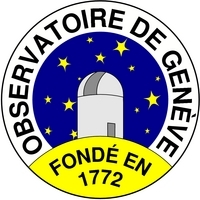
| INTEGRALPlanckGaiaPOLARCHEOPSEuclidATHENA |
| HEAVENSFACTCTALOFTSPICAJEM-EUSOXIPEeXTPTheseus |
| XRISMMAGBOUNDSMARTNet |
| ISDCCDCI |
| Data Centre for Astrophysics Astronomy Department of the University of Geneva |
| ISDC Seminar |
Andrei Bykov
A.F.Ioffe Institute of Physics and Technology, St. Petersburg, Russia
Particle acceleration and non-thermal emission of supernova remnants interacting with winds of young massive stars
Abstract. Powerful stellar winds and supernova explosions with intense energy release in the form of strong shock waves can convert a sizeable part of the kinetic energy release into fluctuating magnetic fields and relativistic particles. The starforming regions are known as a favorable site of energetic particle acceleration and could be efficient sources of nonthermal emission. We discuss models of energetic particle acceleration, interactions and nonthermal emission by supernova remnants in active starforming regions at different stages of their evolution. The high efficiency of particle acceleration in the sources implies the importance of nonlinear feedback effects in a symbiotic relationship where the magnetic turbulence required to accelerate the energetic particles is created by the accelerated particles themselves. Non-thermal emission produced by relativistic particles (both those confined in and those that escape from the cosmic accelerators) can be used to constrain the basic physical models of the sources. High resolution X-ray synchrotron imaging, combined with GeV-TeV gamma ray spectra, is a powerful tool to probe the maximum energies of accelerated particles. Future MeV regime spectroscopy will provide unique information on the composition of accelerated particles.
>> Notice
>> List of ISDC seminars







